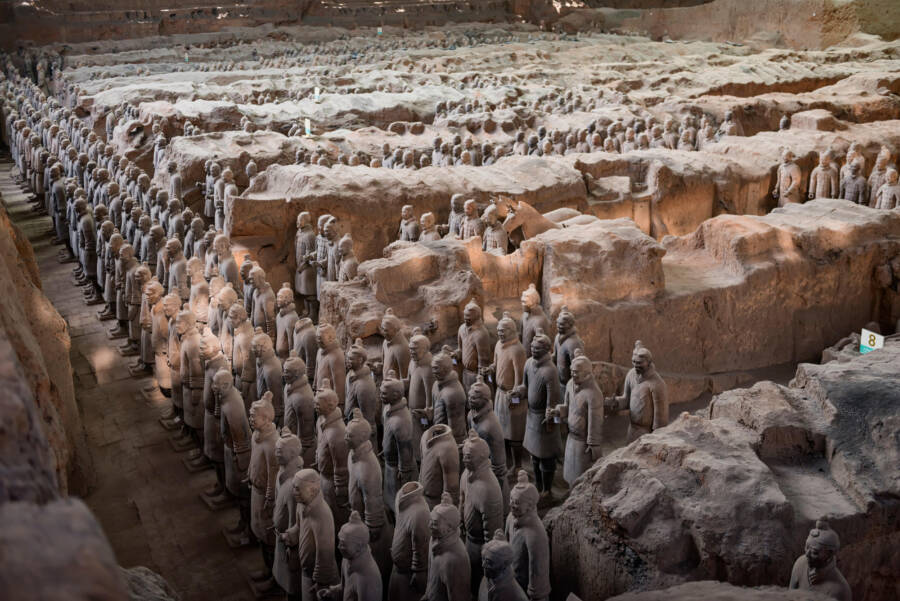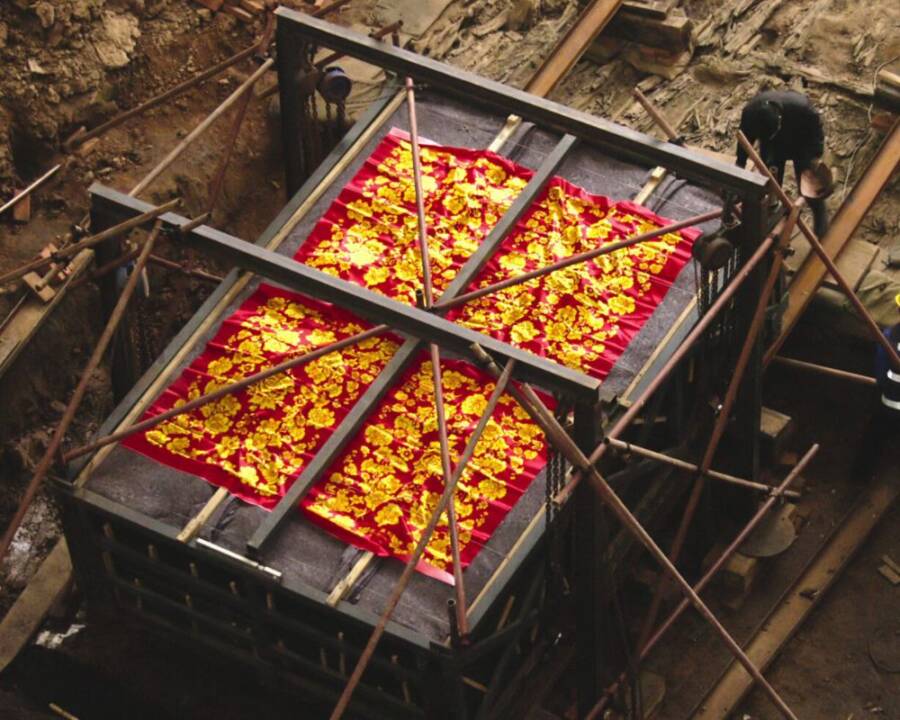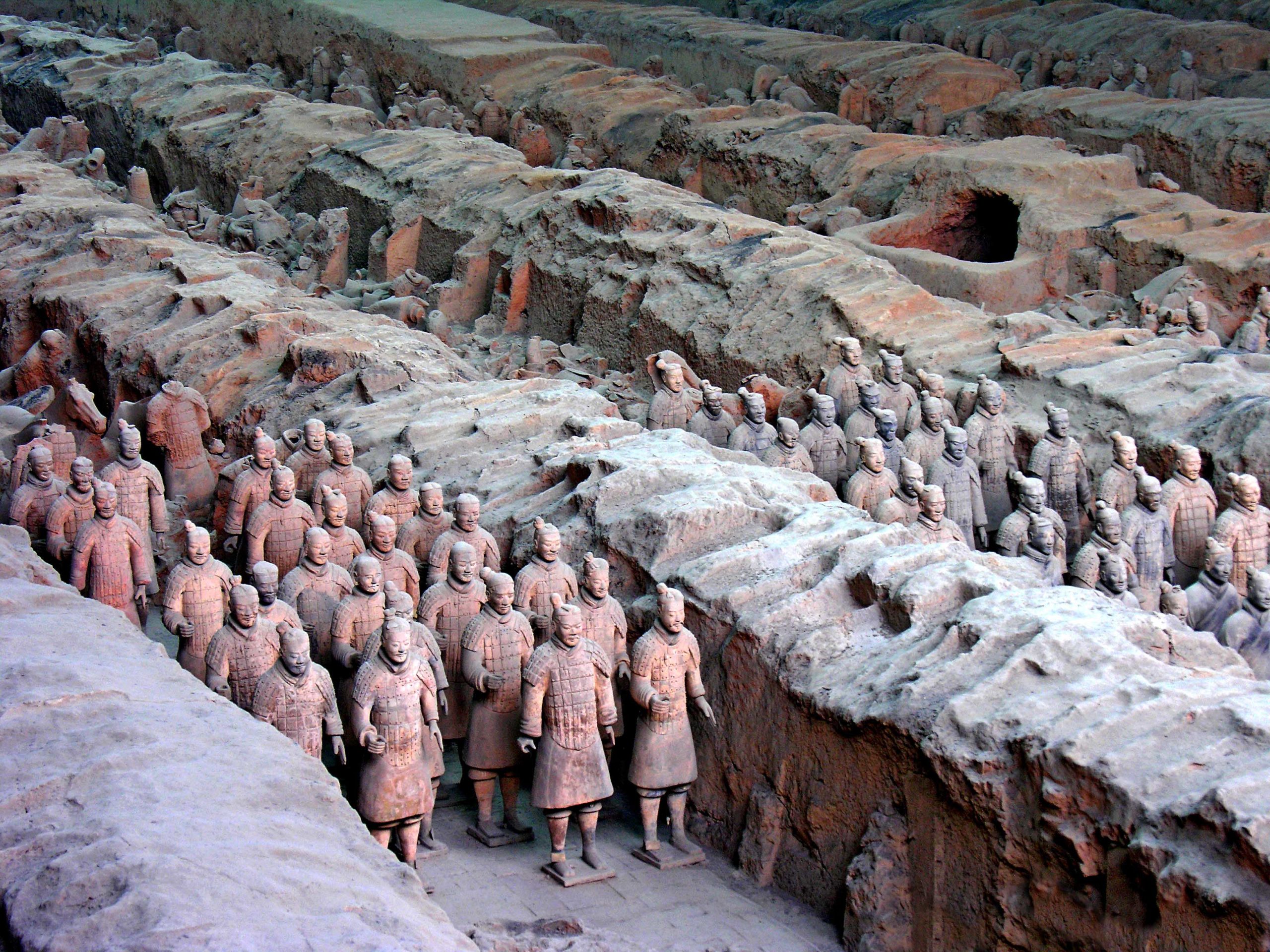Archaeologists believe the coffin may belong to Prince Gao, one of the sons of China’s first emperor Qin Shi Huang.

maximimages.com / AlamyThe Terracotta Army was created to protect China’s first emperor, Qin Shi Huang, in the afterlife.
Archaeologists have unearthed a treasure-filled tomb guarded by the Terracotta Army that may belong to the son of the first emperor of China, Qin Shi Huang.

After bad weather threatened the coffin, researchers raised it and discovered a plethora of artifacts, including weapons, jade, cooking utensils, and bronze coins. The extravagance of the tomb has led researchers to question who was buried inside.
Using both historical accounts and evidence from the coffin itself, archaeologists are hoping to determine whether the tomb belonged to Prince Gao, one of the first emperor’s sons, or another high-ranking official.

Unearthing The Ancient Tomb Near China’s Terracotta Army
In 1974, villagers near Xi’an, China, were digging a new well when they unearthed several clay figures of soldiers. Archaeologists soon discovered that they had stumbled upon the Terracotta Army, the 2,200-year-old warriors sculpted to guard the tomb of China’s first emperor, Qin Shi Huang.

In 2011, archaeologists uncovered nine other tombs at the massive mausoleum, but Chinese law prohibited them for carrying out further excavations. Earlier this year, however, heavy rain threatened to destroy parts of the site, and archaeologists were permitted to remove the coffins from the ground, including the one suspected of belonging to Prince Gao.

NetflixThe tomb was first discovered in 2011, but it was just excavated this year.
The 35,000-pound tomb contained both a coffin and a hoard of treasure, including weapons, armor, jade, gold, cooking utensils, and 6,000 bronze coins.
The tomb showed no signs of looting or raiding, but it was considerably decayed.

“The tomb was so precisely built,” said excavation leader Jiang Wenxiao, as reported by GB News. “So deep, so large in scale. Most ancient tombs have been robbed so we didn’t have much hope for the coffin chamber. But it turned out it hadn’t been robbed. We were amazed.”
Now, researchers are hoping to discern which ancient figure was laid to rest in such an elaborate crypt.

Diving Into The Origins Of The Tomb
Given the opulence of the tomb and its contents, researchers are confident that it must have belonged to a high-ranking warrior, perhaps even the emperor’s son, Prince Gao.
According to the Records of the Grand Historian, an epic history of China written by Sima Qian spanning from the late 2nd century B.C.E. until 91 B.C.E., Prince Gao requested to be killed and laid to rest with his father at the mausoleum.

Public DomainQin Shi Huang, the first emperor of China, who ruled from 221 to 210 B.C.E.
However, researchers have contested the accuracy of this record, given some of its outlandish claims. Instead, they say, it’s more likely that the coffin holds the remains of another official.
“After the first emperor died, his sons all came to a bad end, so I’m still more inclined to believe that this tomb belongs to a high-ranking nobleman or army chief,” Wenxiao stated.

Currently, researchers are examining the coffin for clues as to who was buried inside, and so far, the process has been inspiring for the team.
“For the first time in 2,000 years, we have a chance to figure out if what Sima Qian wrote is correct,” Hui Ming Tak Ted, Qin dynasty historian and associate professor at Oxford University, told The Times. “That’s why the excavation is so exciting.”